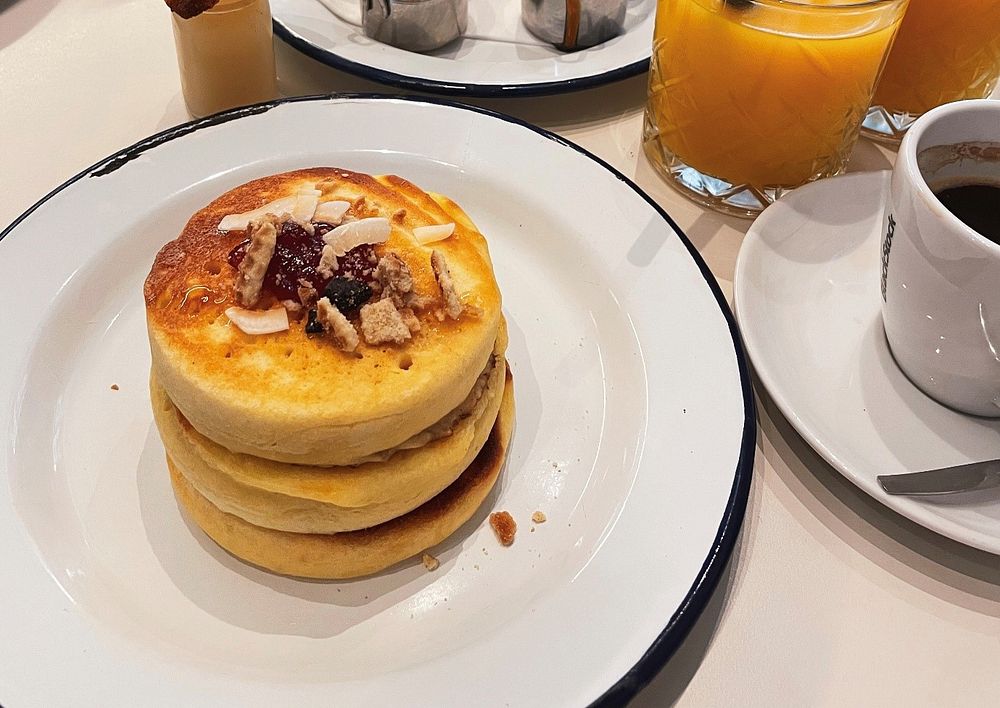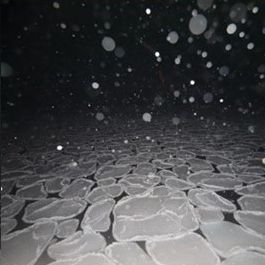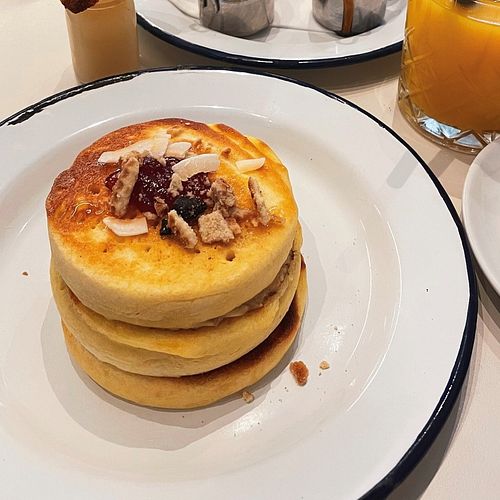14. januar 2024 blogg
By: Ingvild Ytterhus Utengen and Frida Cnossen (Akvaplan-niva)
Greetings from 78 degrees North! We are back in the Barents Sea to study trophic interactions around the Polar Front, collecting and identifying a variety of macrozooplankton and fish. However, this time we are also on an additional mission that was not relevant during the August cruise, but is interesting in this dark, cold, and stormy polar night – we are conducting sea ice observations.
Picture this: a sea so cool that it's practically serving breakfast. After passing 76 degrees north, we observed the first flows of pancake ice – these little frozen discs result from slushy ice congealing together, forming small 'Japanese-pancake-inspired' ice floes (See photo 1). They are usually around 10cm thick and 30cm to 3m in diameter.

Photo 1: Japanese-pancake-inspired' ice floes (Photo: Frida Cnossen)
We are on an hourly 'ice watch', noting the percentage of open water, percentage of ice, ice type, and other supportive parameters along the transect and at all stations. The dominating ice type has been pancake ice, but some nilas ice has also been registered. Nilas ice is a thin, elastic crust of ice, easily bending on waves and under pressure, with a matte and darker surface and a thickness between 5 and 10cm.
As we continued northwards, the balance between open sea and sea ice shifted in favor of the ice. The small pancakes expanded and became sea cakes (<20m in diameter), merging into a cohesive sheet of ice at the northernmost station, 78 degrees north, which also prevented us from trawling at this station.
Sea ice presents important habitats for ice dependent species, well as stunning scenery (see photo 1). However, from recent experience, we have become aware of a drawback. Our cabin is positioned in the front row on the boat, and we are victims of a symphony of icy chaos. When the boat breaks the ice, the sound can frankly be described as scratchhzzkkzzsssqqskouirqskuorqsk. So, if you consider pancakes on the menu, remember to bring earplugs.

Photo 2. Pancakes: A delicious treat at any time of day and inspiration for polar researchers everywhere. (Photo: Ingvild Ytterhus Utengen)
**
The expedition is part of the Research Council of Norway funded project “Polar Front ecosystem studies using novel autonomous technologies: Knowledge for environmental management and assessing ecological risk” (PolarFront) with additional financial support from ConocoPhillips and Equinor. The project, which is led by Paul Renaud, Akvaplan-niva, focus is on the hydrographical, chemical and biological processes in the Barents Sea Polar Front region.
More about the Polar Front project here: https://www.akvaplan.niva.no/en/projects-networks/polar-front-ecology/


